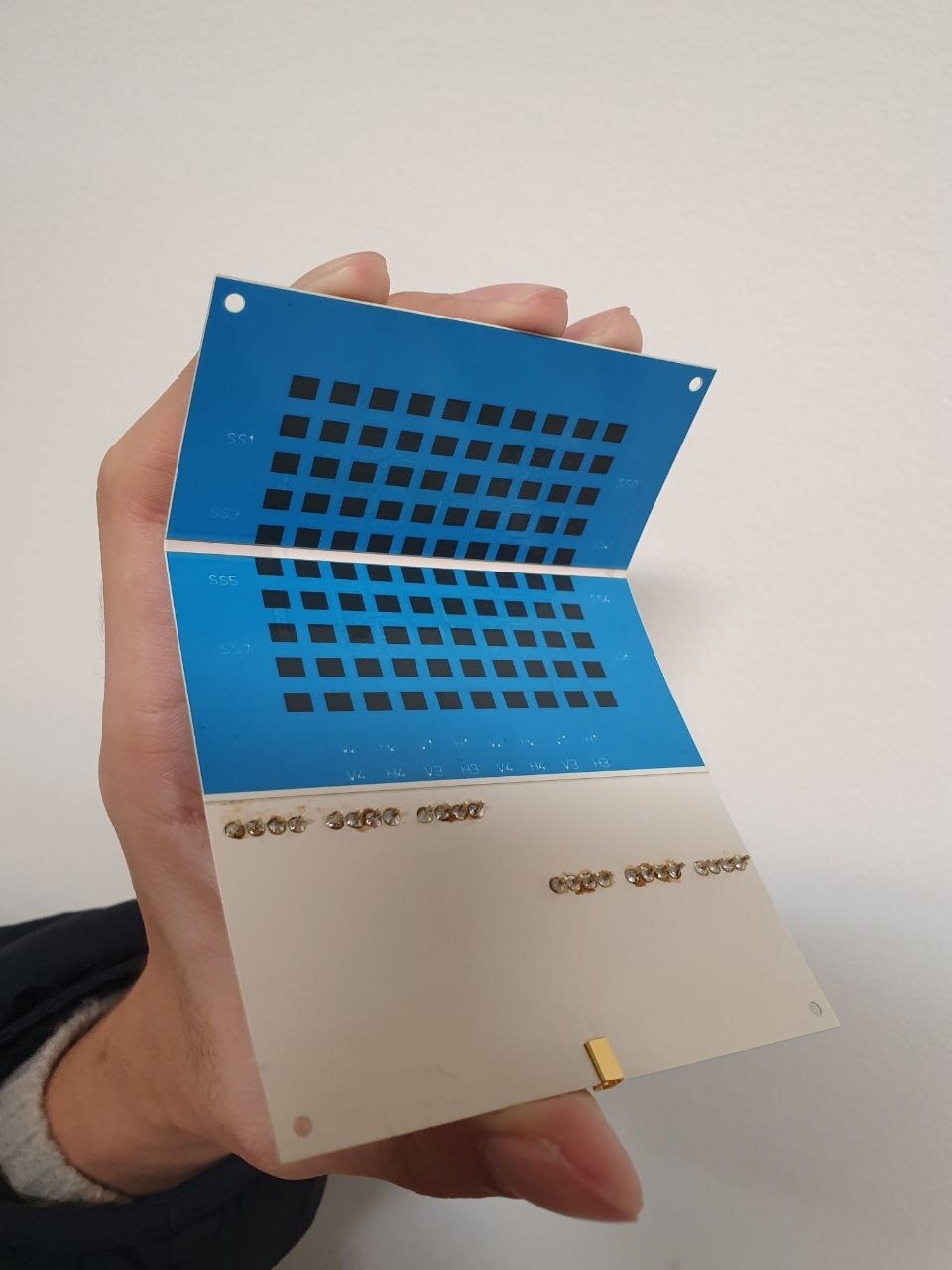New design for a foldable phased-array transmitter can help make satellites lightweight, smaller, and cost-efficient to launch, report scientists at Tokyo Tech. The transmitter is made of stacked layers of liquid crystal polymer and incorporates flexible creases, which provide flexibility and deployability. The new design could make research and implementation of space technologies more accessible to private companies and startups.
 By varying the number of liquid crystal polymer layers, the proposed design incorporates foldable creases, contributing to a smaller form factor and lower weight. Image Credit: Tokyo Institute of Technology
By varying the number of liquid crystal polymer layers, the proposed design incorporates foldable creases, contributing to a smaller form factor and lower weight. Image Credit: Tokyo Institute of Technology
There has been a recent shift in the space industry towards what is now called the “new-space era.” The term refers to how space is no longer dominated exclusively by government agencies such as NASA but has instead become a playground for many private companies and startups interested in exploring and deploying space technologies. While this opens up a vast ocean of possibilities for space research, exploration, and telecommunications, launching satellites remains an expensive endeavor.
In general, low earth orbit (LEO) satellites are both low cost and low latency. However, modern antenna designs for LEO satellites are heavy, leading to a trade-off between making satellites compact and achieving a large antenna aperture for better performance. Such issues increase launch costs significantly and are regarded as major hurdles to overcome in the new-space era.
Against this backdrop, a team of scientists led by Associate Professor Atsushi Shirane from Tokyo Institute of Technology (Tokyo Tech) in Japan has developed a deployable foldable transmitter for small LEO satellites operating in the Ka band. Their innovative design and configuration, presented at the International Microwave Symposium 2023 and published in the IEEE Microwave and Wireless Technology Letters, could pave the way for smaller and lighter satellites without compromising their transmission performance.
The key to this novel design, which consists of a 64-element active phased-array transmitter, lies in a clever stacking of liquid crystal polymer (LCP) layers to create foldable creases without hampering electrical connections. The researchers stacked six layers for the areas designated for the patch antennas and circuit elements, but used only two layers for the creases. This made the phase array foldable without causing any damage to the circuit lines (Figure 1).
Notably, to enable proper operation of the phased-array, the team had to account for the variable folding angle of the transmitter. “In a deployable phased-array mounted onto a satellite, the calibration of a mechanically deformed phased-array plane geometry is an inevitable process,” explains Dr. Shirane. “In the present design, by controlling each phase of antenna element independently, the proposed transmitter could work properly at bending angles ranging from −10° to 20°.” The corresponding beam pattern measurements are shown in Figure 2.
The researchers also had to offset the asymmetries introduced by the creases, which affect the antenna patches closer to them by slightly modifying their size and location.
After thorough testing, they reported a high isotropic radiated power of 46.7 dBm for a remarkably lightweight antenna. “With the flexible hetero-segment LCP board, the proposed phased-array transmitter weighed only 9.65 g with 64 antenna elements, which is superior to a rigid state-of-the-art transmitter that weighs 33.64 g with 16 elements,” highlights Dr. Shirane.
With any luck, further developments in transmitter designs will make deploying space technologies more accessible in this blooming new-space era.